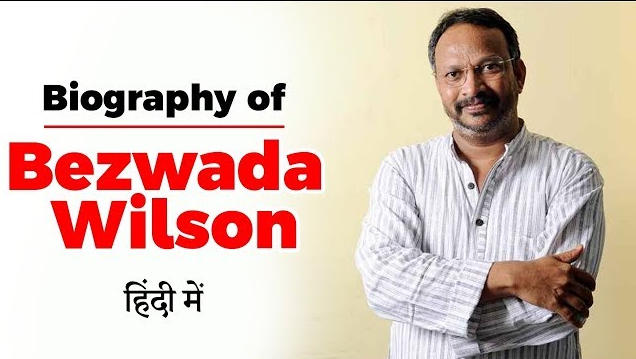Table of Contents
MANUEL SCAVENGING IN INDIA
- The International Labour Organization describes three forms of manual scavenging in India:
- Removal of human excrement from public streets and “dry latrines” (meaning simple pit latrines without a water seal, but not dry toilets in general)
- Cleaning septic tanks
- Cleaning gutters and sewers
- Manual cleaning of railway lines of excreta dropped from toilets of trains is another form of manual scavenging in Indi
DEATHS
- Despite a 2013 law prohibiting employment of manual scavengers, a government survey identified 54,130 people engaged in this job as of July 2019.
- 814 deaths of manual scavengers engaged in cleaning sewers and septic tanks have been recorded in India from 1993 to July 2019 in 20 States and UTs.
EARLY LIFE
- Bezwada was born in 1966 in the Kolar Gold Fields (KGF) in Karnataka in Southern India. He is the youngest child of Bezwada Rachel and Bezwada Yacob, both belonging to the manual scavenging community.
- His father began working for the township in 1935 as a safai karamchari, also called a manual scavenger, manually removing excreta from dry toilets. His eldest brother also worked as a manual scavenger
EARLY LIFE
- Bezwada went to upper primary school in Andhra Pradesh and stayed in the hostel for Scheduled Castes. He went to high school and intermediate in Kolar and Hyderabad .
- Wilson, a Magsaysay award winner in 2016, and the SKA have much to show for their efforts — the number of manual scavengers has come down from 15 lakh in 1996 to 53,236 in 2018.
SAFAI KARMACHARI ANDOLAN
- 1986, Bezwada began his fight to end manual scavenging. Bezwada also began a letter writing campaign, contacting the KGF authorities, the minister and chief minister of Karnataka, the prime minister, and newspapers, but they remained largely unacknowledged.
- In 1993, the Parliament enacted the ‘Employment of Manual Scavengers and Construction of Dry Latrines (Prohibition) Act in 1993′, which banned the construction of dry latrines and outlawed the practice of manual scavenging. Despite the ban, the practice of manual scavenging continues across India.
ANDOLAN
- It was only when photographs were published in a 1994 article in the Deccan Herald, resulting in embarrassing questions in Parliament, that the Karnataka government was forced to acknowledge that manual scavenging continued to be a problem.
- Bezwada then worked for two years to organize manual scavengers in Karnataka. A platform, the Campaign Against Manual Scavenging (CAMS), was formed. This oversaw the conversion of dry latrines into flush toilets and rehabilitation of those who were engaged in manual scavenging.
ANDOLAN
- Wilson moved to Andhra Pradesh and began working .In 1994, Bezwada helped found Safai Karmachari Andolan. SKA initially worked on the state level, until 2003 when Bezwada and four other team members moved to Delhi to launch the Safai Karmachari Andolan nationwide.
- In 2003, Bezwada and the SKA initiated the filing of a Public Interest Litigation in the Supreme Court of Indian naming all states and government departments of Railways, Defence, Judiciary and Education as violators of the Manual Scavenging Prohibition Act.
ANDOLAN
- The PIL was a major step in the efforts to abolish manual scavenging. All the states and central ministries were forced to address the issue of manual scavenging.
- The Supreme Court gave strict orders that the Chief Secretaries of States and Heads of Departments of the central ministries should appear before the court for the case hearings.
- The liberation of safai karmacharis became an important issue during the planning of the 12th Five Year Plan of India in 2010. Bezwada met with parliamentarians, ministers.
- In October 2010, the head of the National Advisory Council, Sonia Gandhi, wrote to the Prime Minister’s office declaring manual scavenging as a national shame and to address its abolition with the utmost urgency and priority.
























 WhatsApp
WhatsApp